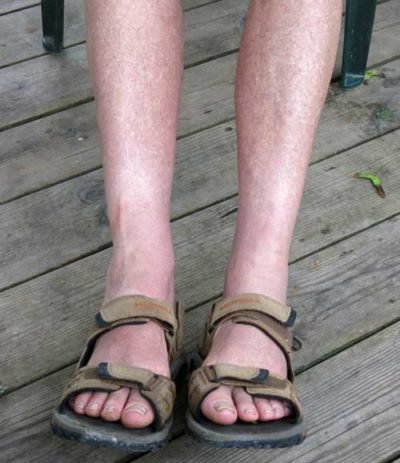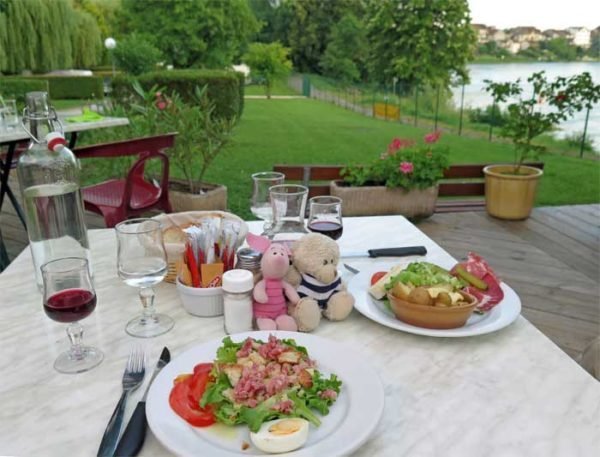Thursday, 30 June 2016
We rose late and indulged in morning showers, then looked about for breakfast.
The camping bar was still closed, but there was a boulangerie on the highway just outside the gates, from where we bought a croissant, a pain aux raisins and a sugar-encrusted cake, said to be a local delicacy.
We also got two takeaway coffees and went back to the terrace of the camping bar for a much more leisurely start to the day than usual.

Michael had long since gone and there was movement from various cycling groups, but we were happy in our idleness. Because of our big change of plans and the train trip, we had almost a week more than we had expected to get to le Puy.
Our exploration of the town of Seyssel began with a walk along the riverside path, and when we got to town we crossed the long bridge.
Half-way to the other side there was a monumental arch supporting an oversized Madonna, and on this arch was a plaque commemorating the reunification of Savoie with France in 1860.
The history of this part of the world is complicated. The original settlement was on the left bank, on a rocky promontory know as a saxellum in Latin, hence the name Seyssel.
From mediaeval times it was in the duchy of Savoie, which comprised parts of Switzerland as well as the area that we had been walking through lately, with the Rhône as its border with the kingdom of France.
At this time Seyssel was split into two separate towns with the same name, spelled differently.
In 1815, after a short-lived annexation by Napoleon, Savoie was absorbed into the kingdom of Sardinia, which also included Piedmont, Liguria and the county of Nice.
This arrangement lasted until 1860, when France agreed to provide military help in the struggle for the unification of Italy, and in exchange took possession of Savoie and Nice, thus completing the modern hexagonal shape of France.
As we crossed the bridge, we left the department of Haute-Savoie and entered that of Ain, but at least we were still in the same country.
We strolled along the riverbank and stopped at a cafe with hectic purple chairs for a round of coffee. At midday the church bells across the water sent out their sweet, rich song, rather different from the customary village bells which often sound like rusty tin cans
By the time we finished coffee, it was lunch time, so we bought two delicious hot wraps from a chatty Lebanese man in a shop nearby.
He said that the world was so full of horrors lately that in his opinion, World War III had already broken out – it just hadn’t been declared yet.
On that cheery note, we carried our lunch back to the camping ground and ate it stretched out in the shade on our mats. The afternoon passed delightfully, sleeping and reading.
In the evening we ate again at the camping restaurant with its wonderful view down the river to the town.

The terrace was crowded with diners. After our apéritifs we had salads (a campagnarde and a montagnarde) followed by steak with a mountain of vegetables for Keith and a local speciality for me – diot au vin blanc – which turned out to be one gigantic red sausage baked in a creamy wine sauce.
It was mountain food and it reminded us of aligot, another mountain dish. We remembered getting our forks hopelessly entangled in the sticky threads of aligot, but diot was much easier to eat.
Previous day: Frangy to Seyssel



